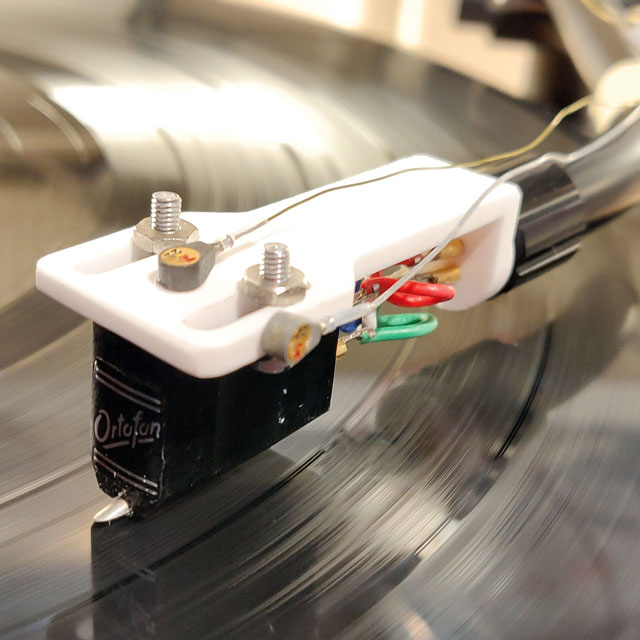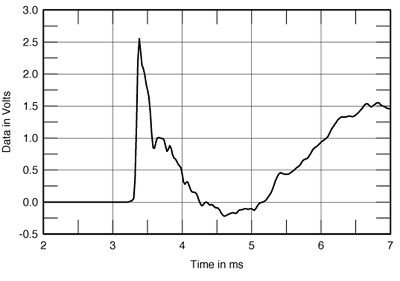I like the audio art galleries. My stereo is an unsellable mess because I like it that way. However, seeing an audio wish dream expressed in a meticulous setup is cool. It may be a static wish dream, but evocative nonetheless.Gawd, are audio dealerships becoming more and more like art galleries?
Is High End Audio Gear Worth the Money?
- Thread starter Ron Resnick
- Start date
You are using an out of date browser. It may not display this or other websites correctly.
You should upgrade or use an alternative browser.
You should upgrade or use an alternative browser.
I couldn’t afford a wife because of audio, let alone replace one with a newI can't afford a new wife because of audio purchases , and i only buy old stuff !
I don't think you were shouting, just talking very loudly.You don't seem to get what a high end product is. High End is not DIY. High end is not poorly finished. High end is not a plain ugly box. High End is not something called ____t. BTW using an EQ only controls part of the signal ( amplitude)and only at a single place. I hate to say this but you seem to only want to find a short cut but not do the work. Everyone has an opinion however all of those opinions are not correct
I have been in this Industry for over 50 years. My clients have complained about every little thing possible over that time. Why isn't it finished better? why is the packing crappy? Why doesn't it do this or that? Why can't I get it in another finish? etc. etc.
You can't have it both ways. If you want products that have all of these things that High End clients want then there is a price to pay. Are all the products that cost a lot worth the money? I agree that they are not. There are a lot of high priced products that do not IMO meet all the criteria to be priced as they are but that is for the markets to determine.
Audio follows certain facts and science that can't be avoided. The room and the set up in the room is at least as important if not more than the gear. Sorry I am not supposed to tell this secret to anyone but I just can't hold it in any longer
From what I understand, "High End Audio" is a marketing term made up by a chap called Harry Pearson to flog expensive gear through some magazine he ran. (I'm in the UK, I hear his name mentioned, no idea who he is.) If people look for expensive hifi and it makes them happy, it's worth it to them. It's a self-fulfilling system.
Some independent observers think the more expensive it is, the happier they will feel.
Others may question those values, well it's none of their goddammmn business (as I've heard it said).
I did not.I feel you are making the point for me. Is High End Audio Gear Worth The Money?
Didn't you just say, the user of the equipment is not qualified or capable of getting the gear to operate at its intended design level. Its like your saying, go ahead and buy a Ferrari, but expect to only drive it to the mechanics to be worked on. Why do you think a guy can make a solid box, put some drivers in it and use a BACCH to control the speakers respose and find it more satisfying than listening to friends Wilson that lack a pro setting them up.
If you think a driver in a box controlled with software can sound good- go for it. If that works some day then the age of high end gear is over.
Buy/build the stereo for yourself, not for a guest- unless they saved your life on Mt. Everest and you owe them a great listening experience.But, were not buying for strangers. Were buying for ourselves. So spending huge sums of money since you have it is worth it. Even if it produces poor sound to a guest listner.
I have the original model wife because of modest audio purchases, and she chose my most expensive piece of kit because it looked good, without asking the price.I can't afford a new wife because of audio purchases , and i only buy old stuff !
I once met up with someone to sell him an amplifier. He told me he was taking a loan and hadn't told his wife. I told him to go home and didn't sell him the amplifier.Its a fallacy to believe those buying expensive gear can afford it without serious consideration. There may be a greater percentage that buy expensive gear that are living beyond their means than those that have no worry about finances to get them to the end of the line.
There's a funny/scary novel about compulsive addiction called "The Irresistible Inheritance of Wilberforce" by Paul Torday. If you have a hifi addiction, it might cure it.
Elliot G.
Industry Expert
Harry Pearson wrote about music and audio but it was never about selling expensive items . You probably could find the first 25 or so issues of the Absolute Sound online. It’s a great read and the basis of most of we talk about today without the tribalism and all a good search for the sound of music .I don't think you were shouting, just talking very loudly.
From what I understand, "High End Audio" is a marketing term made up by a chap called Harry Pearson to flog expensive gear through some magazine he ran. (I'm in the UK, I hear his name mentioned, no idea who he is.) If people look for expensive hifi and it makes them happy, it's worth it to them. It's a self-fulfilling system.
Some independent observers think the more expensive it is, the happier they will feel.
Others may question those values, well it's none of their goddammmn business (as I've heard it said).
Harry was a lot of things but he was a great writer .
Just got home and I could be outside enjoying this South Georgia spring. I also spotted that little guy in the picture below back at it the same tree as I drove by just now. Want to go get more pictures. Just like audio- always want that better picture. But this is so much fun.That might be the case if your arm lacks adjust-ability. But if its truly adjustable and you have a proper protractor then setting up by ear is luck of the draw by comparison
I guess we being audiophiles we can't help ourselves and must belabor points. So ok- I'm going to explain the mechanics of phono cartridges. Please indulge me or skip to the next post.
We have tools to measure and dial in the VTF, ATF, HTA, azimuth and antiskate in addition to test records which can aid in fine tuning antiskate and channel balance. But all of these protractors and such set up the phono cartridge using the cartridge body as the reference point. As far as the tools I use go, the HTA measurement is the only one directly referencing the stylus tip. All other measurements reference the cartridge body. So we have a tolerance stack-up from the stylus to the cantilever to the motor assembly to the cartridge body. Then additional tolerance stack-up as well as measurement repeatability using our eyes with our protractor and other measurement tools. And then as soon as the record starts moving everything changes.
The dynamic forces begin acting on the stylus the moment the record begins spinning. That changes the VTA and HTA as well as the tracking position of the stylus in the groove. For example, drop your phono cartridge onto a stationary record. Observe the side and front of the cartridge. Now start the motor. As the record begins turning notice how the cartridge squats down. You see, the VTA and HTA just changed. And looking from the front, the moment the record starts turning the stylus moves just a bit to the left relative to the cartridge body. So the tracking of the stylus just changed. How do you set all that statically to be just right when it all changes when everything is in motion? You can't. Setting up the cartridge correctly and optimally is an iterative process requiring the stuff between your ears.
Yes, some styli, just like some speakers can sound good across a range of positions but will never sound great at any position. So patience and learning are involved. That's the truth in this hobby- no shortcuts from optimizing a capacitor in an amp or speaker to fitting an acoustic panel on the wall. In the end listening is the key- the final approval.
So one trick I do when seting up VTA and HTA, I use a record that is somewhere between my thickest and thinnest record. And I slowly turn the platter (ie. record) as I adjust HTA. That at least removes some variation for me. And then a stereo test record is useful for setting the anti-skating correctly. I use a mirror and magnifier to adjust azimuth as best I can and then listen for channel balance but expensive electronic gadgets are available for fine tuning that.
One other fun fact about playing vinyl- the phono cartridge and tonearm are a spring/mass system. If the natural frequency is not between about 8-10 Hz then all that set-up work is for nought. Best case the cartridge will track poorly potentially damaging the vinyl or worst case the tonearm will skate across a record. You will eventually come across a record that will make it skip. The phono cartridge should have a specified compliance number which is one over spring rate and the tonearm spec will have an effective mass number. That's used to calculate the system natural frequency and help match a compatible cartridge to a tonearm. And you thought digital was hard.

Taken with Canon R5 MKII and RF 100-500L lens at 500mm.
Last edited:
If only!
There is a way to determine if the high end is worth the price or not … require all distributors at audio shows to play the exact same music.
Say every room is playing Buena Vista Social Club, vinyl or CD. One could go from room to room and rate each sound (what sounds best to you) and then place them in order, your favourite to least favourite with prices listed. Then it would be easy to find the system which sounds best in your price range (which might actually sound better than others costing much more).
There is a way to determine if the high end is worth the price or not … require all distributors at audio shows to play the exact same music.
Say every room is playing Buena Vista Social Club, vinyl or CD. One could go from room to room and rate each sound (what sounds best to you) and then place them in order, your favourite to least favourite with prices listed. Then it would be easy to find the system which sounds best in your price range (which might actually sound better than others costing much more).
My arm allows VTA to be adjusted on the fly. If you bias the cartridge the cartridge as you're setting it up you can deal with the HTA problem. The arm also allows variable mechanical resonance. That latter adjustment is made a lot easier using a calculator so you know the cartridge is compatible in advance before trying to set it up in the arm.How do you set all that statically to be just right when it all changes when everything is in motion? You can't.
When I was at Axpona 2022 all the exhibitors seem to be playing the same handful of songs. In the couple of rooms that impressed me the most I stuck around and got to hear more variation of music.
So it sounds like you’re adjusting the VTA based on the sound. With my SME tone arm when I change VTA it also changes HTA. So it’s an iterative process to get both dialed in just so.My arm allows VTA to be adjusted on the fly. If you bias the cartridge the cartridge as you're setting it up you can deal with the HTA problem. The arm also allows variable mechanical resonance. That latter adjustment is made a lot easier using a calculator so you know the cartridge is compatible in advance before trying to set it up in the arm.
Tuning VTA makes the music go from dull to just right to bright. And then you have to dial it back a bit. And so one person‘s just right is another person‘s too bright.
Last edited:
Generally I don't mess with it, although the Triplanar allows precise VTA adjustment very easily on the fly. If it matches my master tapes I know I got it right. If not, I go back and look again. The Triplanar is so easy to adjust though that I rarely need more than 10-15 minutes to set it up from scratch.So it sounds like you’re adjusting the VTA based on the sound. With my SME tone arm when I change VTA it also changes HTA. So it’s an iterative process to get both dialed in just so.
Tuning VTA makes the music go from dull to just right to bright. And then you have to dial it back a bit. And so one person‘s just right is another person‘s too bright.
I ran an LP mastering operation for about 20 years; SRA at 92 degrees is an approximation only since the mastering engineer sets up the stylus for lowest noise rather than 92 degrees. This means the actually perfect setting is different for every LP. That is why I don't really mess with it too much...
I used a microscope camera to take a picture of the stylus side on. I printed that and then used a protractor to measure the SRA. I was dead on 92° when the cartridge was approximately level. But you are right that was not the ideal sound spot. I had to lower the tone arm, just a bit in the back. Or maybe the SRA was 92° after I lowered the back of the arm. I forget now I’m old.Generally I don't mess with it, although the Triplanar allows precise VTA adjustment very easily on the fly. If it matches my master tapes I know I got it right. If not, I go back and look again. The Triplanar is so easy to adjust though that I rarely need more than 10-15 minutes to set it up from scratch.
I ran an LP mastering operation for about 20 years; SRA at 92 degrees is an approximation only since the mastering engineer sets up the stylus for lowest noise rather than 92 degrees. This means the actually perfect setting is different for every LP. That is why I don't really mess with it too much...
Last edited:
One other fun fact about playing vinyl- the phono cartridge and tonearm are a spring/mass system. If the natural frequency is not between about 8-10 Hz then all that set-up work is for nought.
There's some debate about that lower range. Korf has done some interesting research on the topic. It seems the common logic is based on studies which were done ~70 years ago, and are not necessarily applicable to modern cartridge damper technology.
If you haven't seen it, the blog a 4-part series. I think it's worth reading.

Tonearm and Cartridge Matching, Part I
The Summary
Just like with our previous travels in the land of azimuth adjustment, the accepted wisdom turned out to be completely wrong. It took us a while to find the right path, and we needed outside help to tame the maths. Here's what we have learned through our journey in the low frequency domain:
1) Carlson's formula of a low frequency resonance does not describe the measured low frequency behaviour of the cartridge/tonearm interaction
2) Modern cartridges (meaning all those built in the last 60 years or so) have too much suspension damping and non-linearity for the resonances to dominate
3) The frequency of the observed motion is determined largely by the frequency of the excitation
4) The cartridge/tonearm system acts as a lowpass filter for vibrations picked up by the stylus
5) Too low an effective mass for a given compliance (or too low a compliance for a given effective mass) results in low frequency attenuation and excessive tonearm motion.
6) Too high an effective mass for a given compliance (or too high a compliance for a given effective mass) results in "ringing"—a small resonant peak—that is largely benign and barely registers in the measurements
I’ve seen several turntables that could not play the Telarc pressing of 1812. That record came out in the early 1980s. If the set-up is not right that record will slam the tonearm into the center stop- it’s where the canons fire. The grooves where the canons fire are nearly at right angles.
The build up as you wait to see if the tonearm is going to track it is as exciting as the music.
Back in the day, hifi was so much fun- like when we would try to get our woofers to blow out a match…
The album is from 1979. See pics below.


The build up as you wait to see if the tonearm is going to track it is as exciting as the music.
Back in the day, hifi was so much fun- like when we would try to get our woofers to blow out a match…
The album is from 1979. See pics below.


Last edited:
I have read a lot of bold claims and frankly some things mentioned here not entirely accurate.
…
Quad speakers have text book step response while Wilson speakers are not ideal; Total nonsense. Take a few minutes to look up the step response of Quad, Thiel, Wilson or other speakers on the web. They all are quite similar. The Thiels have the best response but they are clearly underdamped as evidenced by the ringing after the step input. The Wilsons and Quads are critically damped giving just a slightly elongated recovery time but that prevents ringing.
…
There is more than overhang..
There is a snuggle tooth deal in the beginning.
Quad:

Wilson Alexx:

A shotgun blast can hit a few with really aiming per se.I wasn’t even addressing you . I m expressing my opinion period. I didn’t attack you and if that’s how you took it then I apologize but it was not aimed at anyone .
Really? 0.3ms. Maybe a bat can hear that. That difference shows the Alexx is a bit more underdamped than the Quad. The Sasha DAW is a little differrent. And the Thiel CS6 was sharper still but shows ringing which settles out in fractions of a ms which means it was less damped. Some really smart people would have to explain how this translates into what we hear. One thing we don't see is if the measurement microphone is even an order of magnitude faster than these speakers. If not then this data is not very useful.There is more than overhang..
There is a snuggle tooth deal in the beginning.
Quad:
View attachment 147780
Wilson Alexx:
View attachment 147781
A shotgun blast can hit a few with really aiming per se.
And notice the Alexx is almost back to 0 by +4.3 ms after pulse which is at the end of the chart. The Quad at 3.6ms after the pulse which is as far as the chart goes is still not near 0. That's due to the damping.
Ah no…Really? 0.3ms. Maybe a bat can hear that. That difference shows the Alexx is a bit more underdamped than the Quad. The Sasha DAW is a little differrent. And the Thiel CS6 was sharper still but shows ringing which settles out in fractions of a ms which means it was less damped. Some really smart people would have to explain how this translates into what we hear. One thing we don't see is if the measurement microphone is even an order of magnitude faster than these speakers. If not then this data is not very useful.
And notice the Alexx is almost back to 0 by +4.3 ms after pulse which is at the end of the chart. The Quad at 3.6ms after the pulse which is as far as the chart goes is still not near 0. That's due to the damping.
I not sure we both understand what those graphs are trying to show.

Loudspeaker step response measurement and explanation
Learn how to make a loudspeaker step response measurement using ARTA. The data is extracted from the impulse response.
 audiojudgement.com
audiojudgement.com
Earlier in the thread people were talking about how much getting the polarity right matters.
There is either timing problem or a phase problem with the Alexx that, while they are wildly more expensive than the Quad ESLs, their performance on this particular front is not as good.
Actually the negative section in the snaggletooth indicates that the midrange is going backwards, rather than forwards.
That either matters, or it doesn’t… but someone mentioned that the hooking up the wires correctly was step #1.
While the Wilsons also look more expensive in terms on construction, I’d take the Quad ELS myself just based upon measurements.. because in this case the ESLs are worth the money.
Tony, please, keep breaking the rules!btw- if you all are interested. I managed to get this shot of the little fellow today. Apologies if I am breaking the rules.
View attachment 147782
Taken with R5 MKII 200-800mm with 1.4x Extender. 1120mm.
Similar threads
- Replies
- 104
- Views
- 8K
- Replies
- 83
- Views
- 3K
- Replies
- 22
- Views
- 1K
| Steve Williams Site Founder | Site Owner | Administrator | Ron Resnick Site Owner | Administrator | Julian (The Fixer) Website Build | Marketing Managersing |







